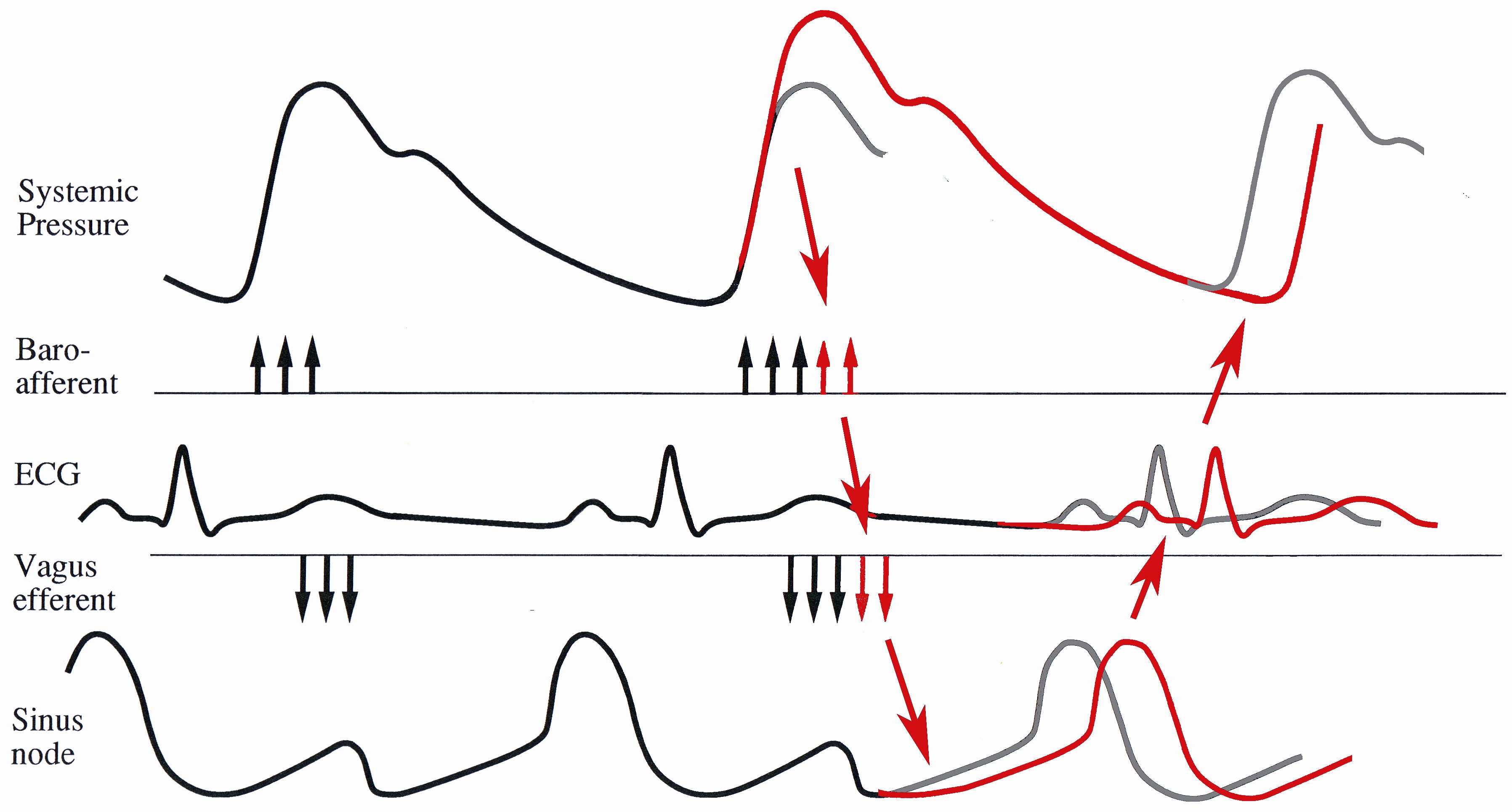-
Home
-
About JCTR
-
Gold Open Access
-
Issues
-
Editorial board
-
Author guidelines
-
Publication fees
-
Online first
-
Special issues
-
News
-
Publication ethics
-
Partners
-
Submit your manuscript
-
Submit your review report
-
Editorial Office
-

This work is licensed under a Creative Commons Attribution-NonCommercial 4.0 International License. ISSN print: 2382-6533 ISSN online: 2424-810X
Volume 1 Issue 3
How the vagus nerve produces beat-to-beat heart rate variability; experiments in rabbits to mimic in vivo vagal patterns
John M. Karemaker
Karemaker, J Clin Transl Res, 2015; 1(3): 190-204
Published online: 20 December, 2015
Abstract
Background and Aim: Analysis of heart rate variability (HRV) has recently become the playing field of mathematicians and physicists, losing its relation to physiology and the clinic. To set the record straight, a set of animal experiments is presented here, which was designed to test how vagus nerve traffic might produce beat to beat (b-t-b) heart rate (HR) control, like the baroreflex will do in vivo.
Methods: The response of HR to vagus nerve stimulation was tested after bilateral vagotomy in rabbits under anesthesia. 3 Protocols were followed: 1. Single burst stimulation at varying moments in one cardiac cycle; 2. B-t-b stimulation in each cycle, coupled to the P-wave with variable delays; in addition, testing the effects of one increased or decreased burst; 3. Tetanic stimulation, shortly interrupted or increased at varying moments in the cardiac cycle.
Results and Conclusions: Sensitivity of the sinoatrial node to the timing of vagal bursts in its cycle from protocol 1 explains most of the observations. A single burst would be most effective when applied in late repolarization or early diastole of the sinoatrial node’s action potential. In b-t-b stimulation the longest cardiac cycles occur when bursts are timed just before the end of the ‘sensitive period’. Later coming bursts have their (diminished) effect on the next cycle; critically timed bursts induce an unstable HR, alternating between long and short cycles. This ran in synchrony with the respirator, thus producing a large respiratory sinus arrhythmia, even though the vagus nerves had been cut. HR-response to vagal burst activity shows two components: a fast one which is phase-sensitive and a slow one, that builds up with longer lasting activity and also disappears slowly. Tetanic stimulation results in prolonged, but variable cycle lengths which are difficult to change by short-lasting manipulation of impulse frequency, be it up or down.
Relevance for patients: Measurement of heart rate variability (HRV) and baroreflex sensitivity (BRS) have become clinical tools in the cardiology clinic and in hypertension research. This study shows how the underlying vagus nerve to heart rate physiology is responsible for moment-to-moment variability in these numbers at almost unchanged underlying physiology.
Programmed stimulation of the vagus nerves in acute animals (rabbits) demonstrates that the optimal mode of fast, beat-to-beat heart rate control by these nerves is by means of bursts of impulses arriving in every heart beat at well-timed moments. In vivo this is how the baroreflex stabilizes blood pressure at the expense of HRV.

DOI: http://dx.doi.org/10.18053/jctres.201503.005
Author affiliation
Department of Anatomy, Embryology and Physiology, Academic Medical Center, University of Amsterdam, Amsterdam, the Netherlands
Tel: +31 20 5664827
Email: j.m.karemaker@amc.uva.nl
Handling editor:
Michal Heger
Department of Experimental Surgery, Academic Medical Center, Amsterdam, the Netherlands

